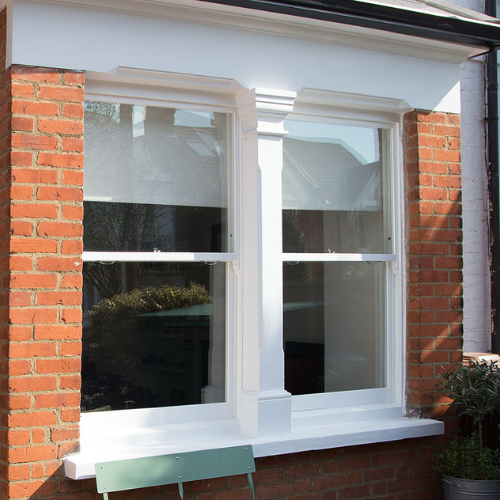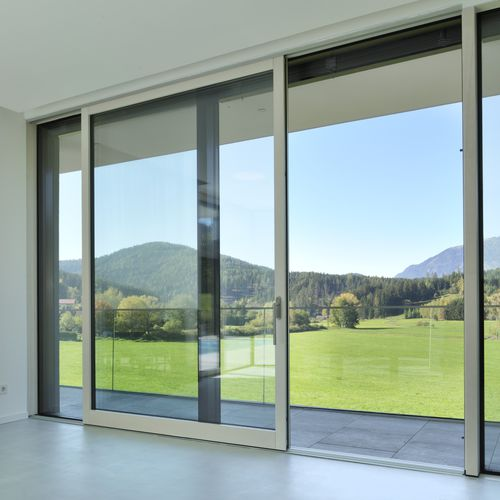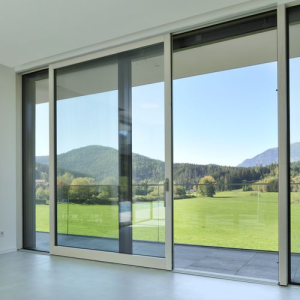If you are weighing up whether to switch to aluminium windows, you are probably juggling three questions at once: how much will it cost, which styles make sense for my home, and who can install them properly without drama. Those are the right questions. Aluminium rewards clear thinking. It is strong and slim, it tolerates British weather without warping, and it carries a clean, modern line that timber and uPVC often struggle to match. It is not the cheapest option on day one, but the long game looks different when you factor maintenance, heat loss, and resale appeal.
I have specified, fitted, and lived with aluminium frames in terraced houses, new‑build flats, and period conversions. The pattern repeats. People are drawn in by the aesthetics and narrow sightlines, then stay loyal because their heating bills drop and the windows still look new five, ten, fifteen years later. Let’s unpack the numbers and choices, then map out a sane route to installation.
Why people search “aluminium windows near me”
Local matters. Transporting glazed units is not trivial, and aftersales support is much smoother with a fabricator or installer who actually picks up the phone and can get to your postcode. When you search for aluminium windows near me, you are not only trying to save a delivery fee; you are de‑risking the project. A local company knows the quirks of your council’s conservation rules, which trickier apertures need site measure rather than plans, and how to coordinate scaffolding on your street. This becomes even more relevant in older parts of the city where reveal depths vary, sills run out of level, and weights boxes lurk behind plaster.
In London in particular, the choice is wide. Aluminium Windows in London range from boutique fabricators who hand finish every corner to volume suppliers who can turn around standard sizes quickly. The key is matching your home to the right product line and not getting dazzled by showroom gloss.
How aluminium performs in real houses
The headline advantages are structural strength, slim profiles, and longevity. Aluminium’s rigidity allows large panes with minimal frame, which means more daylight and better views. Thermally broken frames eliminate the cold-bridge problems that dogged older aluminium generations. The phrase “thermally broken” means that the inner and outer aluminium sections are separated by a non-conductive polyamide bar so heat does not zip out through the frame. Paired with the right glass, modern aluminium windows achieve U-values that meet or beat current Part L standards.
Day-to-day, what you notice is different. Handles feel solid, sashes don’t sag, and opening lights close with a clean seal even after a hard winter. The finish options are broad: matte, satin, or gloss powder coat, in RAL colours from crisp white to heritage greens, even dual-colour inside and out. Black and anthracite lead the trend charts, but I have seen warm greys and textured finishes soften modern extensions beautifully.
One reality check: aluminium conducts sound well. With the correct glazing package, that is not a problem. If you live under a flight path or on a busy road, specify laminated acoustic glass with an asymmetric build. You will pay more, yet the reduction in city roar is worth every pound.
Cost, put plainly
Sticker shock happens when people compare aluminium to the cheapest white uPVC. That is not a fair fight. Compare instead to premium uPVC or hardwood, then add lifetime costs. Here is a realistic breakdown based on recent projects in and around London:
- Small tilt-and-turn window for a bathroom, 600 by 900 mm, white, thermally broken frame, double glazed: £600 to £900 supply only, £900 to £1,300 supplied and installed. Standard casement pair for a bedroom, 1,200 by 1,200 mm, anthracite, trickle vents, double glazed: £1,000 to £1,600 supply only, £1,400 to £2,200 installed. Large fixed picture window, 2,000 by 1,800 mm, high‑spec double or slim triple: £1,800 to £3,200 supply only, £2,400 to £4,200 installed, with handling and craning in tight access adding cost. Heritage sash‑look aluminium with putty‑line glazing bars for conservation aesthetics: typically 20 to 40 percent uplift over a standard casement of the same size. Triple glazing uplift versus basic double: add 10 to 20 percent, more if acoustic interlayers are included.
Installation in London commands a premium. Parking, permits, and tall scaffolds add friction. A simple two‑window swap on the first floor might take half a day with two fitters; a full flat in a Victorian conversion can run to three or four days, especially if plastering and making good are included. Expect labour rates for competent installers in the capital around £200 to £300 per day per fitter.
Do not forget ancillaries. Trickle vents, secure night‑vent positions, concealed drainage, cill pressings, integrated blinds, and custom handles all shift the price. These details, however, often separate a decent install from one that delights you daily.
Styles that work, and where they shine
Casement remains the workhorse. Side‑hung or top‑hung openers give reliable ventilation and security. With aluminium, casements wear slim lines that blend modern with most facades. Tilt‑and‑turn is a favourite for flats, both for the secure tilt position and the ease of cleaning from inside. If you have a high‑rise or a balcony, tilt‑and‑turn earns its keep.
Fixed frames are underused. A non‑opening picture window maximises glass for living rooms and stairwells where ventilation is covered elsewhere. Use them deliberately to frame a garden or a city view.
Sash‑style aluminium does exist, and while a purist will still point you to timber, modern aluminium systems with slender glazing bars and square putty‑line profiles satisfy many conservation officers, especially in the side and rear elevations. For street‑facing windows in listed or strict conservation zones, check early with the council. Some boroughs insist on true timber sashes at the front and allow aluminium to the rear.
Then there are the transition pieces. Aluminium Doors in London, particularly bifolds and sliders, often pair with new windows to unify an extension. Choose a window system from the same supplier as your doors so sightlines and colours match. A poor colour match between RAL batches jars every time you look at it. The best fabricators, including firms like Durajoin Aluminium Windows and Doors, will supply windows and doors from coordinated systems to keep mullion widths and handle finishes consistent.

Glass choices that change comfort
Most of the performance lives in the glazing, not just the frame. A good fabricator will quiz you on orientation, noise, and privacy before recommending glass. There are four main levers: thermal, solar, acoustic, and security.
Thermally, look for argon‑filled double glazing with low‑E coatings. U‑values around 1.2 to 1.4 W/m²K for the whole window are achievable with quality units. South and west elevations that bake in summer benefit from solar control coatings that cut total solar gain by 30 to 50 percent while keeping daylight high. For bedrooms and street fronts, laminated inner panes improve sound reduction and security, turning a tap‑tap into a dull thud. If you are on the ground floor, laminated glass is not just nice to have; it is part of a sensible security package.
If you are tempted by triple glazing in London’s climate, weigh the trade‑offs. Triple helps most in new, very airtight homes. In draughty Victorian terraces, spend the money first on airtightness around frames, insulated reveals, and trickle vents that you can actually close. Triple glazing adds weight, which affects hinge wear and the smoothness of https://www.durajoin.com/ smaller opening sashes. On large fixed panes and in traffic noise hotspots, triple with acoustic interlayers can be excellent. Otherwise, a well‑specified double with asymmetric laminate often hits the sweet spot.
Finishes, colours, and hardware that age well
Powder coating gives aluminium its durable finish. A standard 60 to 80 micron polyester powder coat stands up to rain and UV for years without chalking if you wash it occasionally. In coastal or polluted zones, upgrade to a marine‑grade coating and be fastidious about drainage paths so salty grime does not sit in frame joints.
Colour is personal, but here are patterns I see working. Anthracite on contemporary extensions, black or very dark grey on warehouse conversions, warm greys or off‑whites on period homes to soften the contrast with brick and stone. Dual colour is handy. A deep exterior tone with a soft white or cream inside avoids making interiors feel heavy. Handles matter more than people think. A cheap handle rattles moods as well as frames. Go for robust, tactile hardware in finishes that match your other metals. Brushed stainless, black, and bronze are reliable choices.
Installation done right
Most disappointments trace back to fitting, not the product. A square window will never sit happily in a skewed opening unless the fitter knows how to pack, shim, and seal correctly. This is where local expertise pays off. The better companies take a detailed site survey with laser measures and check diagonals, not just https://www.google.co.in/search?q=Durajoin+Aluminium+Windows+and+Doors width and height. They will also test for cavity closers, hidden lintels, and live cables under the plaster line.
On the day, look for dust control, careful removal of old frames, and sensible sequencing: prepare all apertures first, then install, then seal, then make good. Expanding foam alone is not an installation. You want mechanical fixings into sound substrate, compressible tapes or quality sealants to handle movement, and thermal breaks around the perimeter. In older homes, insulated plasterboard on the reveals eliminates cold lines that can sweat in winter. It adds cost but saves you from black spots behind curtains.
Security and compliance must be part of the conversation. For most London homes, compliance with Part Q means multipoint locking, robust hinges, and laminated glazing in vulnerable locations. Trickle vents are often required for ventilation under Part F. They are not pretty, but the right integrated vent in the head of the frame is far better than a retrofitted flap chewing into your sightline.
Timeframes and what can go wrong
From survey to installation, a typical lead time is two to six weeks, stretching longer if you choose bespoke colours or non‑standard glass. Fitting a houseful of windows may take two to five days depending on access and the need for scaffold. Weather can interrupt, especially if large apertures are open to the sky.

The snags I see most: mismeasured sills that pool water, poor drainage hole alignment in rebated installations, colour mismatch between windows and doors from different batches, insufficient packers behind fixings, and sealant beads that split inside the first season because the joint was too thin. All of these are avoidable. Pick installers who show you section details, talk about drainage, and share references where you can see jobs at least a year old.
Energy, comfort, and the bill you pay every month
Upgrading from 1990s uPVC or single glazing to modern aluminium with good double glazing can cut heat loss through windows by 30 to 60 percent, depending on the starting point. In a typical London terrace, windows account for a meaningful chunk of fabric losses. Real savings vary, but it is common to see £150 to £350 per year shaved off gas bills in a mid‑terrace when paired with draught proofing and loft insulation. More important than the pounds is the feel. Rooms warm faster, radiators cycle less, and you can sit close to the window in January without a cold back.
Solar control reduces summer overheating. If your living room faces west and turns into a greenhouse at 6 pm, consider a low g‑value glass for those panes. Pair it with external shading if possible, because glass can only do so much against low‑angle sun. Getting this right makes aluminium’s slim frames a pleasure instead of a magnifying glass.
Planning, conservation, and neighbourly considerations
For most replacements, you do not need planning permission. You do need to comply with Building Regulations, either through a FENSA or CERTASS registered installer or a local authority building control sign‑off. In conservation areas, the rules tighten. Street‑facing elevations may have material or profile restrictions. Aluminium can pass if it mimics the existing fenestration closely enough, but do not guess. Submit drawings and a sample if requested.
If scaffolding crosses a neighbour’s airspace, secure a licence. Party wall issues are rare for simple window swaps, but if you are altering openings, check the Act. Good installers help navigate these nuances because they handle them weekly.
Pairing windows with aluminium doors
Many homeowners upgrade doors and windows together. It is smart to view the project as a single facade upgrade. Aluminium sliders and bifolds present big decisions. Sliders give the largest glass area and best weather seals. Bifolds open a wall completely on rare perfect days but have more frame lines when closed. The right answer depends on how you live. In compact London gardens, a three‑panel slider that stacks behind one leaf often beats a bifold that eats patio space when open.
When you combine, match systems where possible. If you choose a slimline casement system for windows, pick a compatible sliding door system so sightlines align. This is where a supplier like Durajoin Aluminium Windows and Doors shows its value, because one manufacturer controlling both windows and doors reduces the risk of colour or profile mismatch.
How to choose a supplier and not regret it
Here is a short checklist that helps separate marketing from substance:
- Ask for whole‑window U‑values, not just centre‑pane figures, and get them in writing for your exact sizes. Check sample corner joints. Mitred, crimped, and sealed correctly, the joint should be tight and clean with no visible gaps or smear. Demand proof of system certification and installer accreditation, and clarify the warranty split between fabricator, installer, and glass unit maker. Visit one or two installed jobs at least a year old. Look at sealant beads, drainage slots, and whether powder coat gloss still looks fresh. Confirm post‑installation service: snagging timelines, emergency callout for a failed lock, and realistic lead times for replacement glass.
If you are searching specifically for Aluminium Windows in London, shortlist three local fabricators or installers. Include at least one who will survey and fit their own product rather than subcontracting both ends. Some Londoners prefer a firm with a dedicated service team because city living adds wear and tear.

A tale of two projects
One client in Walthamstow replaced eight windows in a 1930s semi. They went for anthracite outside, white inside, and a mix of fixed and side hung casements. Argon‑filled double glazing with a low‑E coating, laminated street‑side panes, and trickle vents sized to the rooms. The installer added insulated boards to the reveals and sealed with compriband and a flexible sealant. Cost was just under £11,000 installed. Before the upgrade, the lounge radiator ran nonstop; afterward, the thermostat dialled back by two degrees and comfort improved immediately. Noise from the bus route dulled to a background murmur.
Contrast that with a Battersea flat owner who bought on price. The windows looked fine on day one, but the install skipped perimeter insulation. Winter brought condensation bands around the heads and cills. Within six months, hairline cracks formed where foam had expanded against brittle plaster. The fix was messy and cost more than the initial saving. Different outcomes, same city, same material. The difference was the people on the tools and the thought given to the details.
Maintenance and lifespan
Aluminium asks little. Wash frames and glass a few times a year with mild soapy water, rinse, and avoid abrasive pads. Check drainage holes are clear after autumn leaf fall. Lubricate moving parts annually with a light silicone or PTFE spray. Inspect sealant beads every couple of years. A good bead lasts a decade or more, but sun, movement, and pollution eventually ask for a refresh. Powder coat finishes regularly reach 25 to 35 years before needing attention. Recoating is possible but rarely necessary in normal urban conditions.
Hardware is the consumable. Handles and hinges may need replacement after a decade or two, particularly on heavy sashes. Specify branded, serviceable parts at purchase so replacements are straightforward.
The money question, revisited
Is aluminium worth it? If you plan to move in eighteen months, probably not. Pick cost‑effective upgrades that help sale appeal, and leave the next owner to choose their frame material. If you plan to stay five to ten years or more, aluminium pays back in durability, comfort, and a clean aesthetic that resists fashion churn. For rentals, the resilience and low maintenance reduce headaches. For your own home, the joy is daily. You notice it every time you slide a window open without sticking or stand by a big pane and still feel warm.
Cost is real, but so is value. The best advice is simple. Choose a reputable local installer, specify glass and seals for your street and orientation, and treat the interface between frame and wall as seriously as the window itself. That is how you turn a search for aluminium windows near me into a project that improves your home for decades.